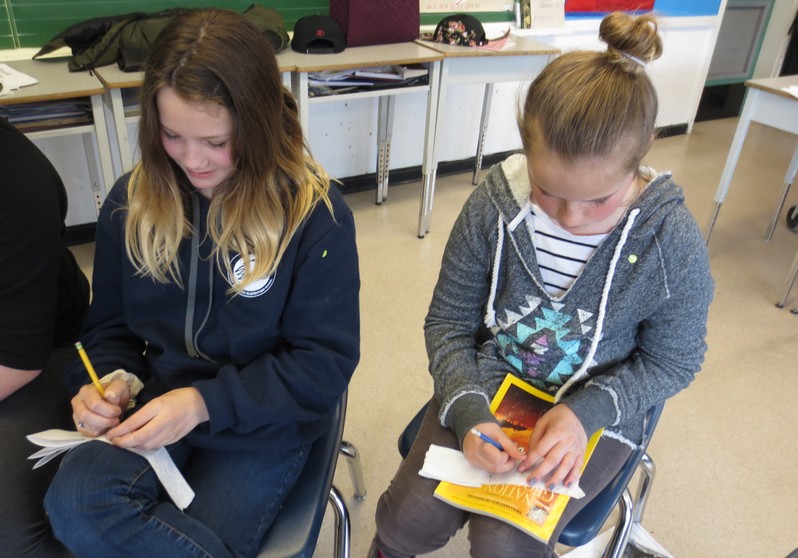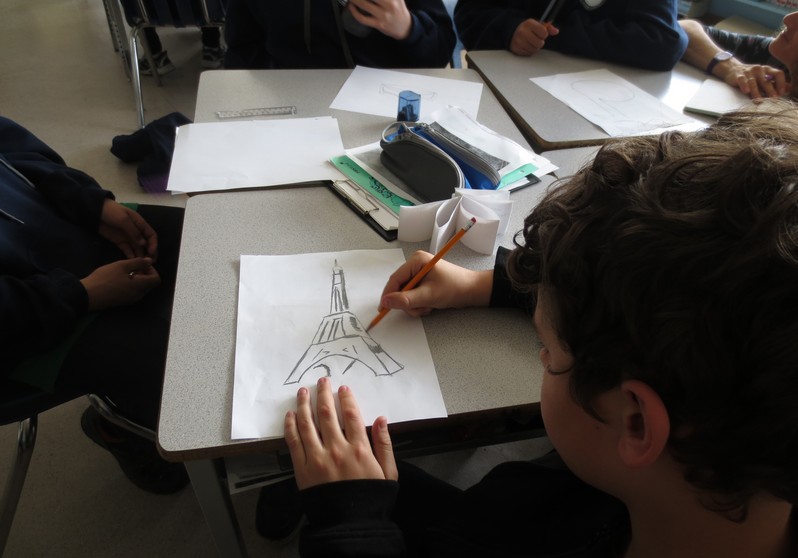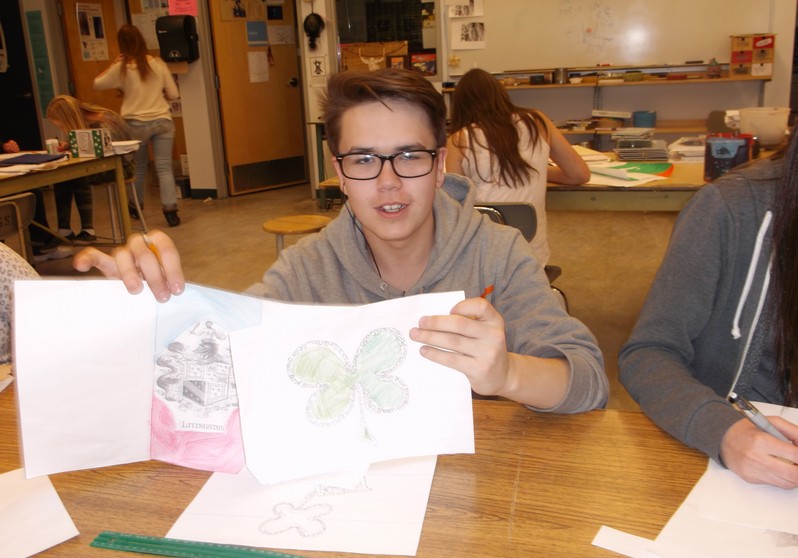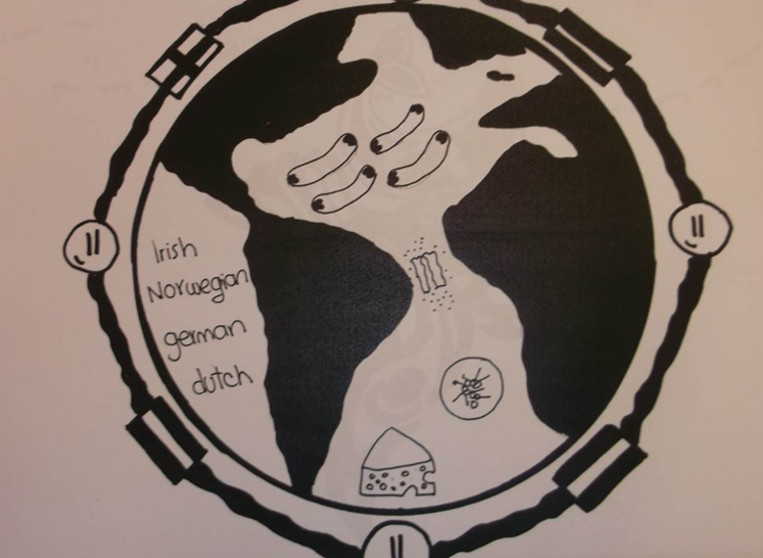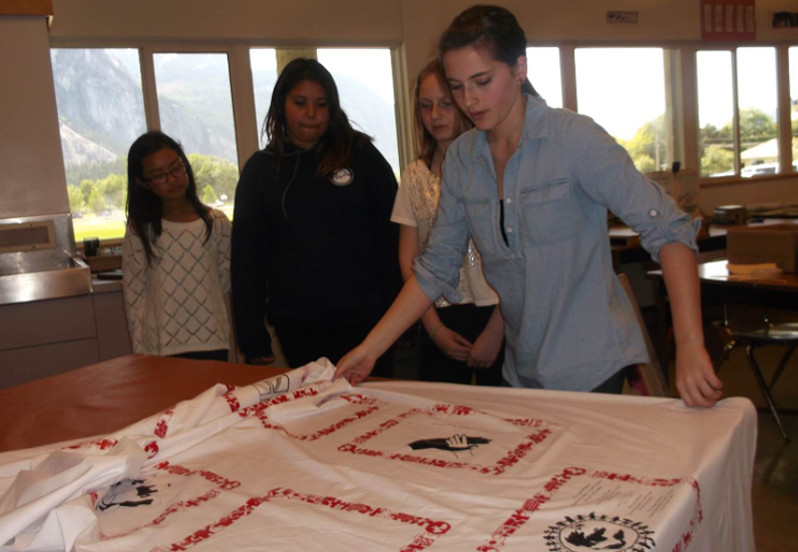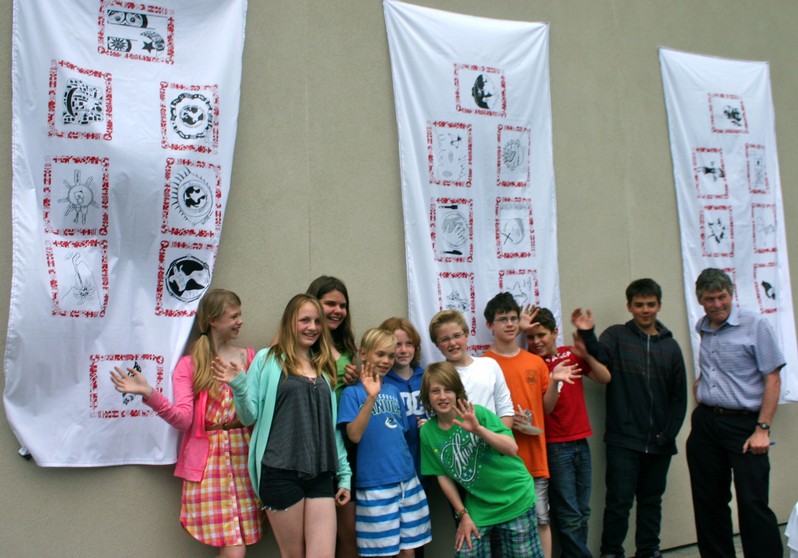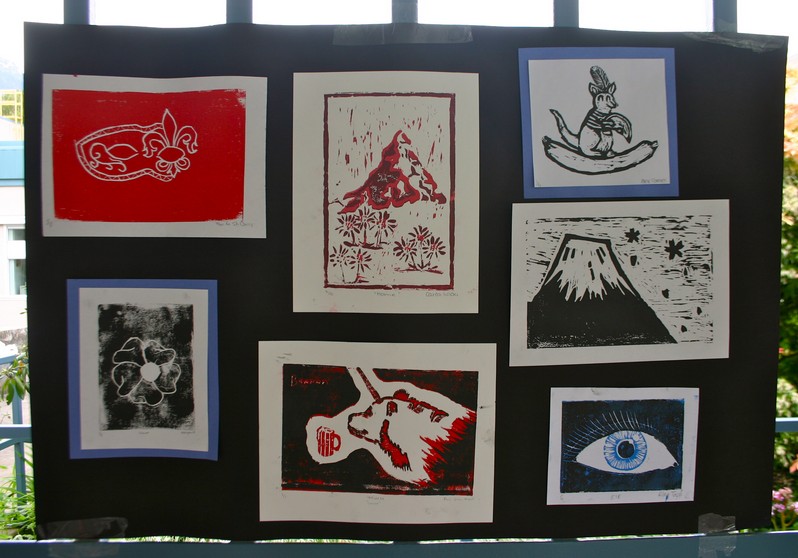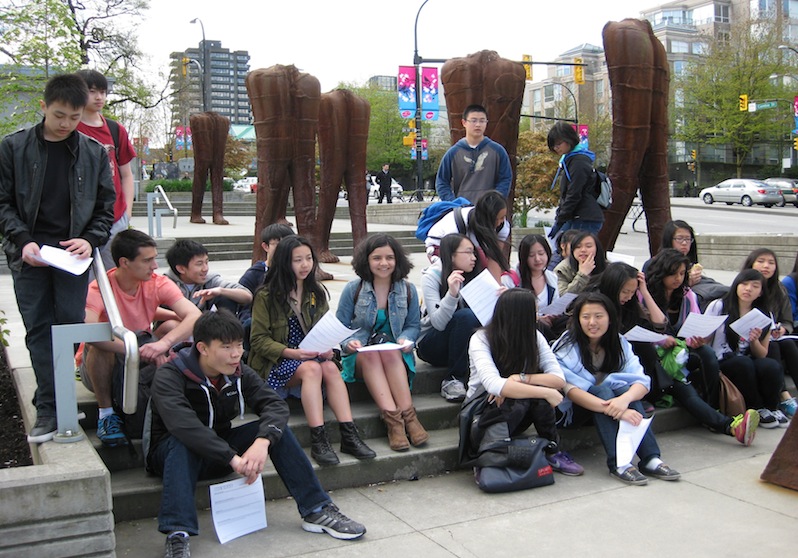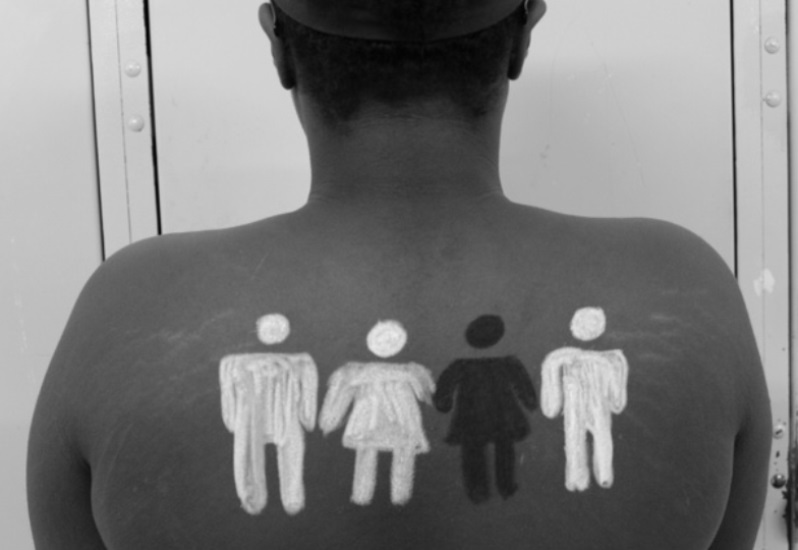Howe Sound Gr 10 – 12 & Squamish Gr 6/7
Arts Education, Geography, Language Arts
Schools
Howe Sound Secondary, Squamish, BC
Ecole Squamish Elementary, Squamish, BC
Teachers
Howe Sound Secondary: Nathalie Boisvert and Geneveive Taylor
Ecole Squamish Elementary: Selene Johnston and Matt Parker
Artist
Laura Barron
Class
Two classes of Grade 6/7 students, two classes of Grade 10-12 students
Connection to the Vancouver Biennale Exhibition
Vancouver Biennale 2009-2011 Exhibition: We, 2008 (Jaume Plensa, Spain) – Students discussed the visual narrative presented by the piece of multiple cultures and languages.
The curatorial theme of the 2014-2016 exhibition is Open Borders / Crossroads Vancouver. This project relates to the exhibition theme in many ways:
- Crosses national borders as students learn about the different cultures in their school
- Crosses borders of communication as students learn about the ways that cultures communicate their histories and narratives through art and storytelling
- Different grades and schools are brought together to work on a multi-disciplinary project
- Spice of Life serves as a crossroad of understandings and perspectives from multiple ages, economic groups and cultures from the school communities.
Other Sources of Inspiration
- Alphabet Stories – art installation at South Hill Library
- Visual Narratives – Slideshow of art from different cultures created by Laura Barron
Overview
Drawing from the Curriculum Unit plan, Language Borders, Squamish Elementary Grade 6/7 and Howe Sound Secondary Grade 10-12 students engaged in a cross-disciplinary project that explored the central idea that art and language can connect humanity by allowing us to express the human experience. Inspired by multi-cultural art through time including We, 2008, students responded to the Guiding Questions by creating poetry, art and oral history presentations leading to a visual narrative installation piece, shared by both schools, to reflect their cultural heritage. Throughout the project students developed individual and collective narratives about the human experience through the lens of their own individual cultural backgrounds and fostered an appreciation of their Canadian cultural mosaic through sharing and art. Students from both the elementary and secondary school worked together to put on Spice of Life, a celebration and pot luck of the different cultures within their schools.
BIG IDEAS
Art, music and language can connect humanity by helping engage us to express the human experience
Guiding Questions
How can we promote appreciation of our Canadian cultural mosaic?
Curriculum Access
Arts Education: Students learnt how different cultures have communicated narratives through visual art in different time periods. Using different artistic methods and skills, students learnt how to convey and present their own cultures through symbols and visual maps.
Language Arts: Students explored the mediums of creative writing to learn how they can tell stories about their identity and culture. They learnt various styles of poetry and prose writing and how oral narratives and inform and be informed by visual narratives.
Geography: Became familiar with world geography and the way that location, resources and landscapes effect culture and personal identity.
Learning Process
Each class began with a slide show of art from different time periods and cultures prepared by the artist, that tell a visual narrative of that culture. Elementary students were asked to think about how narratives can be transformed into visuals in an Exquisite Corpse exercise wherein students passed around a scroll of paper and alternatively wrote a caption or drew a picture related to the previous person’s caption and vice versa. All students wrote poetry including anagram poetry using their surnames, haikus about diversity and concrete poems using a talisman shape that student identify with their culture in order to learn more about their history and learn about the different cultures of their peers.
The secondary students participated in a choreographed mapping activity based on students’, their parents, and grandparents’ birthplaces. Students composed a post card message to recipient of their choice, describing the location depicted in the image they chose representing their family’s place of origin. Visual arts students were challenged to create a personal flag to represent their family’s culture. The class collectively agreed upon shared elements to include in the flag such as animals, food and landscapes and created a common boarder to be placed around each flag.
All students participated in a Show and Tell session in their class where students shared one cultural object accompanied by a related oral narrative gathered from their memory, parents, ancestors or written record. Students created prose stories from these sessions as well as writing about ethnic foods associated with their culture. Elementary school students visited Howe Sound School and worked with a buddy to group brainstorm conceptual words about culture and food. Students took turns writing haikus inspired by culture and food and responding with a visual image. The students collectively put together Spice of Life, a pot-luck celebration of the cultural heritage of their school where students brought food from their family not families? culture. The flags created by secondary students were screen printed onto tablecloths to be shared and presented to the whole school community.
Student Creation
All students:
- Haikus, concrete poems and anagram poetry relating to culture and ancestry
- Prose writing about oral family history and ethnic food
- Show and Tell presentation
- Various designs of food for the Spice of Life celebration and potluck
Grade 10 Visual Arts students:
- Personal flags and silkscreen tablecloths
- Post card letters from their family’s country of origin
- Lino-block images
Taking Action
All classes came together in a potluck celebration of their collaborative work titled Spice of Life, where they shared foods from their various cultures in the spirit of cultures who commonly find identity, communion and joy in breaking bread together. Silkscreened tablecloths with cultural designs were hung and shared with the school.
Time Line
April:
- Introduction to the Vancouver Biennale
- Slide show of Visual Narratives: multi-cultural art from different time periods
- Exquisite Corpse exercise with Elementary students
- Writing poetry: anagram surname poem, talisman concrete poem, diversity haiku
Grade 10 students:
- Choreograph mapping activity
- Postcard writing
- Create personal flags
All students:
- Show & Tell – Students share one cultural object (food/recipe, clothing, art, music, language, dance, poem, heirloom item) accompanied by the Oral Narrative that relates to the object
- Elementary students shown photos of works in progress from Secondary school
May
- Elementary school students visit Howe Sound School and each student works with a buddy to:
- Group brainstorm to create conceptual word bank around culture and food and respond to each other’s poetry and art
- Plan potluck and recipe contributions for Spice of Life
- Spice of Life potluck and presentation with all students at Howe Sound Secondary
Reflection
Teacher: Nathalie Boisvert
I enjoyed the experience of working with other students from different grades and different school. The celebration at the end was a great experience. It was challenging to organize the time to get together with other classes as we are all on block rotations.
Teacher: Matt Parker
My most positive experience of the project is working with an energetic, positive minded professional artist.
Artist: Laura Barron
This Squamish Big Ideas project was ultimately quite successful, particularly thanks to the terrific cooperation of high school art teacher, Nathalie Boisvert, as well as the extensive efforts of her students. It was also helpful that the three other Squamish teachers, who came to the project with varying degrees of experience with arts integration in the classroom, remained open and eager to explore new arts-based strategies and tools. Their students, some of whom were perhaps less accustomed to undirected creative or critical thinking, showed great progress in their imaginative thinking by the end of the project. This was especially evident in the final collaboration between primary and secondary students. This activity provided a valuable mentorship opportunity, resulting in the best products of the engagements: cultural diversity haikus with corresponding graphic logos. Throughout the project, students created interesting written narratives and visual content. But the nature and sophistication of these illustrated haikus demonstrated a deeper integration of the project’s Enduring Understanding: “through arts expression we can cultivate a greater appreciation of Canada’s diverse cultural mosaic”. I also observed that a good number of students had their curiosity about their cultural heritage sparked throughout Spice of Life. In conclusion, I am ever more committed to integrating arts in the classroom, to continue to cultivate students’ inherent creativity.
